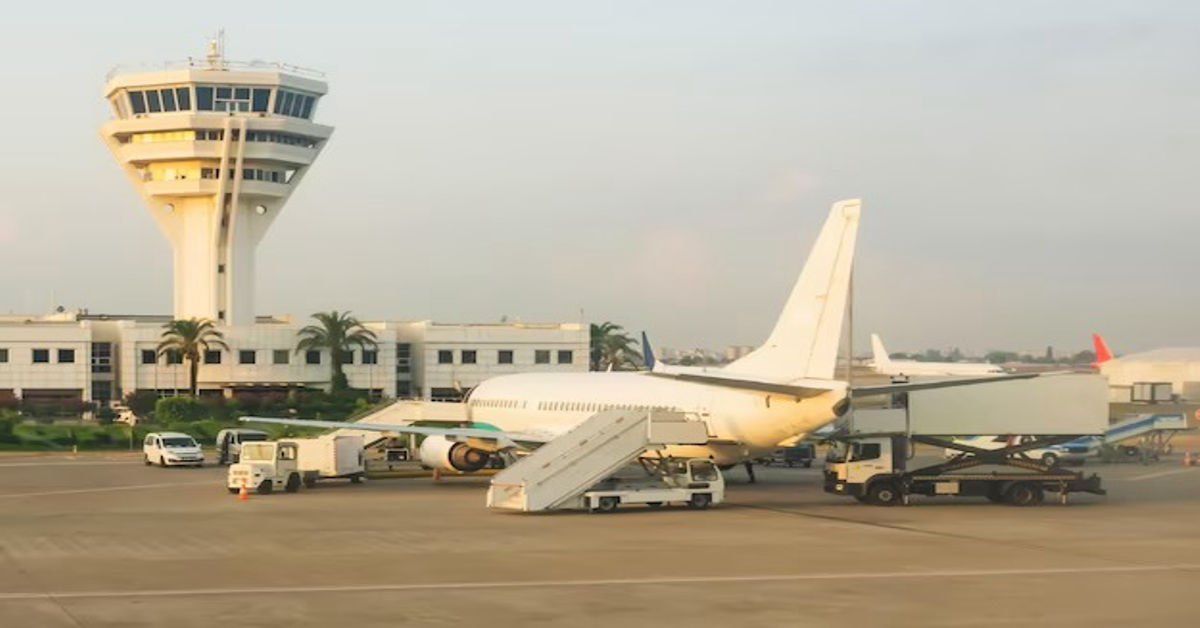In Papua New Guinea, where towering mountains and dense jungles make road travel nearly impossible, aviation isn’t just a convenience—it’s a lifeline. Scattered across some of the most challenging terrain on Earth, remote communities rely on the sky as their primary link to the rest of the country. At the heart of this airborne network is the National Airports Corporation (NAC), the key organization entrusted with maintaining and modernizing the nation’s civil airports. More than just an infrastructure manager, the NAC plays a vital role in keeping the country connected, ensuring that vital services, commerce, and people can move safely and efficiently across vast and often isolated regions.
As PNG embraces growth and regional development, the NAC is spearheading ambitious strategies to upgrade its aviation infrastructure for a more connected and economically resilient future. With a focus on modernization, sustainability, and safety, the corporation is not only improving airport facilities but also fostering international standards and partnerships that can elevate the nation’s aviation capabilities. This article explores how the NAC balances the pressures of rugged geography, limited resources, and growing demand—highlighting its mission to turn challenges into opportunities in one of the world’s most logistically complex aviation landscapes.
What is the National Airports Corporation?
The National Airports Corporation (NAC) is the body entrusted with managing Papua New Guinea’s civil airports. As a state-owned enterprise, it operates under a commercial model while maintaining public service obligations. Its primary function is to ensure the delivery of safe, secure, and efficient airport services across the nation.
NAC administers both the infrastructure and the services associated with airport operations. From handling runway safety to facilitating terminal operations and implementing development programs, it is the central hub of aviation governance in the country.
Historical Background and Legal Formation
The NAC was officially formed in 2009 as a result of reforms in Papua New Guinea’s civil aviation sector. These reforms aimed to separate regulatory oversight from commercial operations. The Civil Aviation Act 2000 provided the legal framework for the corporation, and in 2010, NAC commenced operations.
This transformation allowed NAC to function independently from the regulatory authority, which helped streamline airport management and enabled focused investment in infrastructure and operations.
Vision, Mission and Core Principles
Vision: To develop a fully integrated and sustainable national airport network by the year 2030, offering superior operational standards and supporting socio-economic growth.
Mission: To deliver secure, efficient, and customer-oriented airport services that promote safety, drive economic development, and connect Papua New Guinea internally and globally.
Core Values:
- Customer Commitment
- Integrity and Transparency
- Professional Excellence
- Innovation and Continuous Improvement
- Accountability and Stewardship
- Respect and Teamwork
- Environmental and Social Responsibility
These principles guide NAC in decision-making, stakeholder engagement, and future planning.
Overview of Papua New Guinea’s Airport Network
Papua New Guinea’s geography necessitates a well-structured network of airports. The NAC oversees a total of 22 national airports that are categorized based on the type of aircraft they accommodate.
NAC Airport Categories
| Airport Type | Number of Airports | Sample Locations |
| Jet-Capable Airports | 13 | Port Moresby, Lae, Mt. Hagen |
| Non-Jet Airports | 9 | Alotau, Daru, Wewak |
These airports serve as critical lifelines for remote communities and play a vital role in the national economy.
Strategic Infrastructure Development: The CADIP Program
The Civil Aviation Development Investment Program (CADIP) is a large-scale modernization initiative aimed at improving airport infrastructure and services throughout the country. The first phase of CADIP focused on upgrading runways, installing safety equipment, and building modern terminals.
Objectives of CADIP:
- Enhance passenger safety and security
- Achieve compliance with international aviation standards
- Support socio-economic development in remote regions
- Build climate-resilient infrastructure
CADIP has significantly improved airport certifications and operational capacity, particularly in high-traffic areas like Port Moresby and Nadzab.
Emphasis on Safety and Regulatory Adherence
Aviation safety remains at the core of NAC operations. The corporation implements stringent safety protocols in line with international standards. Its safety management systems focus on:
- Risk Assessment and Mitigation
- Regular Training and Certification of Staff
- Advanced Surveillance and Monitoring
- Runway and Perimeter Security
These measures are continually evaluated to ensure that safety is never compromised.
Services and Passenger Experience
Beyond infrastructure, NAC plays a significant role in managing passenger experience. It handles:
- Terminal Management
- Flight Scheduling Coordination
- Ground Services
- Customer Service and Information Desks
- Retail and Food Concessions
With growing passenger numbers, the corporation is investing in smart airport technologies to offer seamless services and real-time travel updates.
Environmental Sustainability and Community Role
Sustainability is embedded in NAC’s operations. Efforts include:
- Eco-Friendly Infrastructure Design
- Renewable Energy Integration
- Waste Management Systems
- Noise and Emissions Control
NAC also collaborates with local communities to provide jobs, support small businesses within terminals, and enhance airport access to essential services like health and education.
Governance and Leadership Structure
The NAC is governed by a board of directors appointed by the government. Daily operations are managed by a Chief Executive Officer, supported by executive departments including Operations, Finance, Engineering, and Safety.
Corporate governance is strengthened through:
- Transparent Procurement Processes
- Annual Financial Audits
- Stakeholder Consultations
This governance structure ensures accountability and strategic alignment with national objectives.
National and Regional Economic Contributions
Airports are more than transport hubs; they are economic drivers. NAC’s network contributes to:
- Boosting Tourism and Hospitality
- Facilitating Domestic and International Trade
- Enabling Medical and Emergency Services
- Strengthening Government and Business Mobility
The development of airport infrastructure also spurs local employment and encourages investments in nearby communities.
Key Statistics and Operational Data
NAC Operational Overview
| Key Metric | Value |
| Total Airports Managed | 22 |
| Jet-Capable Airports | 13 |
| Airports Under Certification | 17 |
| Workforce Size | 500+ Employees |
| Investment via CADIP | Over USD 500 Million |
| Annual Passenger Volume | Approx. 6 Million |
These numbers reflect NAC’s substantial operational footprint and national importance.
Major Challenges and Emerging Opportunities
Challenges:
- Geographic and Logistical Difficulties
- Aging Infrastructure in Remote Areas
- Financial Sustainability in Low-Traffic Airports
- Balancing Security with Passenger Convenience
Opportunities:
- CADIP Phase II and Future Infrastructure Projects
- Expansion of Cargo and Freight Operations
- Digital and Smart Airport Innovations
- Strategic Public-Private Partnerships
The next decade will be critical for NAC’s transformation into a modern, resilient airport authority.
Comparative Analysis with International Counterparts
Benchmarking NAC Globally
| Country | Airport Operator | Model | Airports Managed |
| Papua New Guinea | National Airports Corporation | State-Owned | 22 |
| Thailand | Airports of Thailand | Public Company | 28 |
| Fiji | Airports Fiji Limited | State-Owned | 15 |
| Vietnam | Airports Corporation of Vietnam | Public Enterprise | 21 |
This comparative analysis reveals potential strategies for governance, financing, and service delivery that NAC could adopt.
In-Depth: Port Moresby International Airport
Port Moresby International Airport is the largest and most advanced airport in Papua New Guinea. It serves as the main international gateway and a hub for domestic aviation.
Key Features:
- Modern Terminal Facilities
- Multiple Runways with Night Operations
- Integrated Customs and Immigration Services
- Commercial and Retail Outlets
Plans for future development include a capacity expansion, improved cargo handling systems, and enhanced passenger amenities.
Long-Tail Keyword Optimization Insights
To expand visibility and reach for the keyword, consider optimizing for the following related terms:
- Papua New Guinea airport network
- National Airports Corporation infrastructure projects
- Airport development in remote areas
- PNG civil aviation services
- Smart airport systems in Pacific nations
These terms will help capture broader search interest while maintaining content relevance.
Conclusion and Actionable Takeaways
The National Airports Corporation is at the forefront of aviation development in Papua New Guinea. Through strategic planning, infrastructure investment, and stakeholder collaboration, it is enhancing national connectivity and economic resilience.
Take Action:
- Learn more about NAC’s latest developments on their official platforms.
- Engage with aviation projects or explore business opportunities within the airport network.
- Share this information to raise awareness about the crucial role of airports in national development.
Frequently Asked Questions
Q1: What is the main role of NAC?
NAC manages the infrastructure, safety, and services of national airports across Papua New Guinea.
Q2: How many airports does it operate?
A total of 22, including 13 jet-capable airports and 9 non-jet airports.
Q3: What is CADIP?
It is an investment program aimed at upgrading and modernizing airport facilities across the country.
Q4: How is NAC funded?
Through government allocations, development funding and operational revenue.
Q5: What are its long-term goals?
To operate a sustainable, internationally compliant and technologically advanced airport network.







